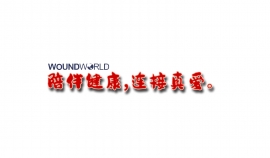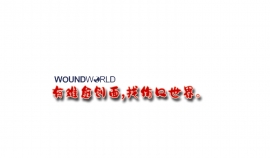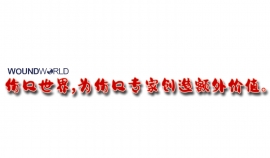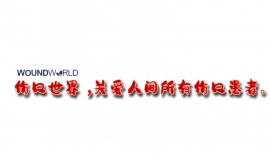
伤口世界

- 星期三, 23 10月 2024
近十年面部年轻化治疗进展
冉维志,高崧瀛
黑龙江省医院整形颌面外科(哈尔滨 150030)
冉维志:主任医师,二级教授岗位,黑龙江省医院整形颌面外科前主任。黑龙江省整形外科领军人才梯队学科带头人,曾在日本新泻大学研修。任中国康复医学会修复重建外科专业委员会常委、美容学组组长,黑龙江省康复医学会修复重建外科学会主任委员,任《中华整形外科杂志》等编委。近年来完成课题近 10 项,并获奖。发表国家级论文 30 余篇。专业方向:面部年轻化。
【摘要】 面部老化由皮肤、其深方软组织(包括脂肪、肌肉、筋膜韧带等)及骨骼等因素导致。在皮肤方面主要表现为皱纹加深,皮肤干燥、粗糙、颜色加深等;深方软组织表现为容积丢失和重力所致松垂;骨骼方面主要表现为骨质的选择性吸收。目前,对抗不同原因所致的面部老化,应采取针对原因的综合治疗方法,如手术、埋线提升(线雕)、自体脂肪移植、透明质酸、肉毒素注射及光-电技术等。
【关键词】 面部老化;面部年轻化;治疗进展
Advances in treatment of facial rejuvenation in the past ten years
RAN Weizhi, GAO Songying
Department of Plastic Surgery, Heilongjiang Provincial Hospital, Harbin Heilongjiang, 150030, P.R.China Corresponding author: RAN Weizhi, Email: 该Email地址已收到反垃圾邮件插件保护。要显示它您需要在浏览器中启用JavaScript。
【Abstract】 Facial aging is caused by several aspects involving skin, its deep soft tissue (fat, muscles, fascia ligaments, etc), and bones. The skin presents deepen wrinkles, darker, drying, and roughness. Volume loss and sag caused by gravity can be seen in deep soft tissue. And selective absorption can be seen in bones. At present, to combat facial aging caused by different causes, we have adopted comprehensive treatment methods such as facial rhytidectomy, embedded wire ascension, autogenous fat graft, hyaluronic acid or botulinum toxin injection, and optoelectronic techniques, etc.
【Key words】 Facial aging; facial rejuvenation; treatment progress

- 星期二, 22 10月 2024
Methods for the Improvement of Acne Scars Used in Dermatology and Cosmetology: A Review
Karolina Chilicka 1,* , Monika Rusztowicz 1 , Renata Szyguła 1 and Danuta Nowicka 2 ID
1 Department of Health Sciences, Institute of Health Sciences, University of Opole, 45-040 Opole, Poland; 该Email地址已收到反垃圾邮件插件保护。要显示它您需要在浏览器中启用JavaScript。 (M.R.); 该Email地址已收到反垃圾邮件插件保护。要显示它您需要在浏览器中启用JavaScript。 (R.S.)
2 Department of Dermatology, Venereology and Allergology, Wrocław Medical University, 50-368 Wrocław, Poland; 该Email地址已收到反垃圾邮件插件保护。要显示它您需要在浏览器中启用JavaScript。 * Correspondence: 该Email地址已收到反垃圾邮件插件保护。要显示它您需要在浏览器中启用JavaScript。; Tel.: +48-665-43-94-43
Abstract: Acne vulgaris is a chronic skin disease that, depending on its course, is characterized by the occurrence of various skin eruptions such as open and closed comedones, pustules, papules, and cysts. Incorrectly selected treatment or the presence of severe acne vulgaris can lead to the formation of atrophic scars. In this review, we summarize current knowledge on acne scars and methods for their improvement. There are three types of atrophic scars: icepick, rolling, and boxcar. They are of different depths and widths and have different cross-sections. Scars can combine to form clusters. If acne scars are located on the face, they can reduce the patient’s quality of life, leading to isolation and depression. There are multiple effective modalities to treat acne scars. Ablative lasers, radiofrequency, micro-needling, and pilings with trichloroacetic acid have very good treatment results. Contemporary dermatology and cosmetology use treatments that cause minimal side effects, so the patient can return to daily functioning shortly after treatment. Proper dermatological treatment and skincare, as well as the rapid implementation of cosmetological treatments, will certainly achieve satisfactory results in reducing atrophic scars.
Keywords: acne vulgaris; atrophic scars; dermatology; scar improvement
Citation: Chilicka, K.; Rusztowicz, M.; Szyguła, R.; Nowicka, D. Methods for the Improvement of Acne Scars Used in Dermatology and Cosmetology: A Review. J. Clin. Med. 2022, 11, 2744. https://doi.org/ 10.3390/jcm11102744
Academic Editors: Hei Sung Kim and Stamatis Gregoriou
Received: 19 April 2022
Accepted: 11 May 2022
Published: 12 May 2022
Publisher’s Note: MDPI stays neutral with regard to jurisdictional claims in published maps and institutional affiliations.
Copyright: © 2022 by the authors. Licensee MDPI, Basel, Switzerland. This article is an open access article distributed under the terms and conditions of the Creative Commons Attribution (CC BY) license (https:// creativecommons.org/licenses/by/ 4.0/).

- 星期一, 21 10月 2024
Diverse Roles of Cellular Senescence in Skeletal Muscle Inflammation, Regeneration, and Therapeutics
Yuki Saito1† and Takako S. Chikenji 1,2 * †1
Department of Anatomy, Sapporo Medical University School of Medicine, Sapporo, Japan, 2 Department of Health Sciences, School of Medicine, Hokkaido University, Sapporo, Japan
Skeletal muscle undergoes vigorous tissue remodeling after injury. However, aging, chronic inflammatory diseases, sarcopenia, and neuromuscular disorders cause muscle loss and degeneration, resulting in muscular dysfunction. Cellular senescence, a state of irreversible cell cycle arrest, acts during normal embryonic development and remodeling after tissue damage; when these processes are complete, the senescent cells are eliminated. However, the accumulation of senescent cells is a hallmark of aging tissues or pathological contexts and may lead to progressive tissue degeneration. The mechanisms responsible for the effects of senescent cells have not been fully elucidated. Here, we review current knowledge about the beneficial and detrimental effects of senescent cells in tissue repair, regeneration, aging, and age-related disease, especially in skeletal muscle. We also discuss how senescence of muscle stem cells and muscle-resident fibro-adipogenic progenitors affects muscle pathologies or regeneration, and consider the possibility that immunosenescence leads to muscle pathogenesis. Finally, we explore senotherapy, the therapeutic targeting of senescence to treat agerelated disease, from the standpoint of improving muscle regeneration.
Keywords: senescence, skeletal muscle, chronic inflammation, aging, muscle regeneration, muscle stem cells, FAPs, fibrosis
Edited by:
Barbara St. Pierre Schneider, University of Nevada, Las Vegas, United States
Reviewed by: Keitaro Yamanouchi, The University of Tokyo, Japan Antoneta Granic, Newcastle University, United Kingdom
*Correspondence: Takako S. Chikenji 该Email地址已收到反垃圾邮件插件保护。要显示它您需要在浏览器中启用JavaScript。†
ORCID: Yuki Saito orcid.org/0000-0002-7949-1628 Takako S. Chikenji orcid.org/0000-0003-2832-3656
Specialty section: This article was submitted to Inflammation Pharmacology, a section of the journal Frontiers in Pharmacology
Received: 11 July 2021
Accepted: 23 August 2021
Published: 06 September 2021
Citation: Saito Y and Chikenji TS (2021) Diverse Roles of Cellular Senescence in Skeletal Muscle Inflammation, Regeneration, and Therapeutics. Front. Pharmacol. 12:739510.
doi: 10.3389/fphar.2021.739510

- 星期五, 18 10月 2024
Cellular senescence and wound healing in aged and diabetic skin
Arisa Kita1,2 , Sena Yamamoto3 , Yuki Saito1 * and Takako S. Chikenji 3 *
1 Department of Anatomy, Sapporo Medical University School of Medicine, Sapporo, Japan, 2 Department of Plastic and Reconstructive Surgery, Sapporo Medical University School of Medicine, Sapporo, Japan,
3 Graduate School of Health Sciences, Hokkaido University, Sapporo, Japan
Cellular senescence is a biological mechanism that prevents abnormal cell proliferation during tissue repair, and it is often accompanied by the secretion of various factors, such as cytokines and chemokines, known as the senescenceassociated secretory phenotype (SASP). SASP-mediated cell-to-cell communication promotes tissue repair, regeneration, and development. However, senescent cells can accumulate abnormally at injury sites, leading to excessive inflammation, tissue dysfunction, and intractable wounds. The effects of cellular senescence on skin wound healing can be both beneficial and detrimental, depending on the condition. Here, we reviewed the functional differences in cellular senescence that emerge during wound healing, chronic inflammation, and skin aging. We also review the latest mechanisms of wound healing in the epidermis, dermis, and subcutaneous fat, with a focus on cellular senescence, chronic inflammation, and tissue regeneration. Finally, we discuss the potential clinical applications of promoting and inhibiting cellular senescence to maximize benefits and minimize detrimental effects.
KEYWORDS
cellular senescence, senescence-associated secretory phenotypes (SASP), woundhealing, aged-skin, diabetic skin
EDITED BY
Chengliang Deng, Affiliated Hospital of Zunyi Medical University, China
REVIEWED BY
Eleni Mavrogonatou, National Centre of Scientific Research Demokritos, Greece Mariaceleste Aragona, University of Copenhagen, Denmark
*CORRESPONDENCE Takako S. Chikenji, 该Email地址已收到反垃圾邮件插件保护。要显示它您需要在浏览器中启用JavaScript。 Yuki Saito, 该Email地址已收到反垃圾邮件插件保护。要显示它您需要在浏览器中启用JavaScript。
RECEIVED 25 November 2023
ACCEPTED 05 February 2024
PUBLISHED 19 February 2024
CITATION
Kita A, Yamamoto S, Saito Y and Chikenji TS (2024), Cellular senescence and wound healing in aged and diabetic skin. Front. Physiol. 15:1344116.
doi: 10.3389/fphys.2024.1344116
COPYRIGHT
© 2024 Kita, Yamamoto, Saito and Chikenji. This is an open-access article distributed under the terms of the Creative Commons Attribution License (CC BY). The use, distribution or reproduction in other forums is permitted, provided the original author(s) and the copyright owner(s) are credited and that the original publication in this journal is cited, in accordance with accepted academic practice. No use, distribution or reproduction is permitted which does not comply with these terms.

- 星期四, 17 10月 2024
Macrocystis pyrifera ferment-containing creams for optimizing facial skin rejuvenation
Michael Gold MD FAAD1 | Yoon-Soo Cindy Bae MD FAAD2 | David J. Goldberg MD JD FAAD3,4 | Sumayah Jamal MD PhD5 | Amy B. Lewis MD6 | Shari Marchbein MD FAAD7 | Adriana Ros DO8 | Uma Santhanam PhD9 | Lisa DiNatale9,10 | Jaime Emmetsberger PhD9,10


- 星期三, 16 10月 2024
细胞衰老与衰老相关疾病研究进展
田潇雨 卢娜
中国药科大学,中国·江苏 南京 210000
摘 要
衰老(Senecence)是细胞功能逐渐退化的一种状态,在这种状态下细胞几乎丧失复制能力,并且细胞周期抑制基因p16INK4a 的表达升高。细胞衰老贯穿生物个体的整个生命过程,在各种生理以及病理过程中发挥重要的作用。一方面,衰老的细胞能够促进胚胎发育,伤口愈合和宿主免疫反应以及抑制肿瘤发生发展等。另一方面,随着年龄增长而在体内积累的衰老细胞也会对机体带来有害的影响。这些不能增殖的细胞产生衰老相关分泌表型(Senescence-Associated Secretory PhenotypeSASP),促进衰老相关疾病(Aging-related Diseae)的发生发展,而清除衰老细胞能够减缓衰老相关疾病的症状。因此寻找能够特异性杀死衰老细胞的药物(Senolytics)成为了抗衰老领域的研究重点。
关键词
细胞衰老;衰老相关分泌表型;衰老相关疾病;抗衰老;Senolytics
Advances in Research on Senescence in Health and Diseases
Xiaoyu Tian Na Lu
China Pharmaceutical University, Nanjing, Jiangsu, 210000, China
AbstractSenescence is a state in which the cell's functional characteristics are gradually deteriorating, in which the cell is at a sustained lowevel ofreplication and is accompanied by an increase in the expression of the cell cycle inhibitor pl6lNK4a The production of senescent cells occurs throughout life and plays key roles in various physiological and pathological proceses. These noneproliferating celsoccupy key cellular niches and produce senescence-associated secretory phenotype (SASP) which contributes to aging-related diseasesprogress. Therefore, the search for Senolytics has become the focus ofresearch in the field of anti-aging.
Keywords
cellular senescence, SASP, aging-related disease, anti-senescence, senolytics
